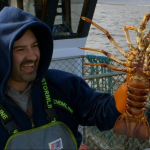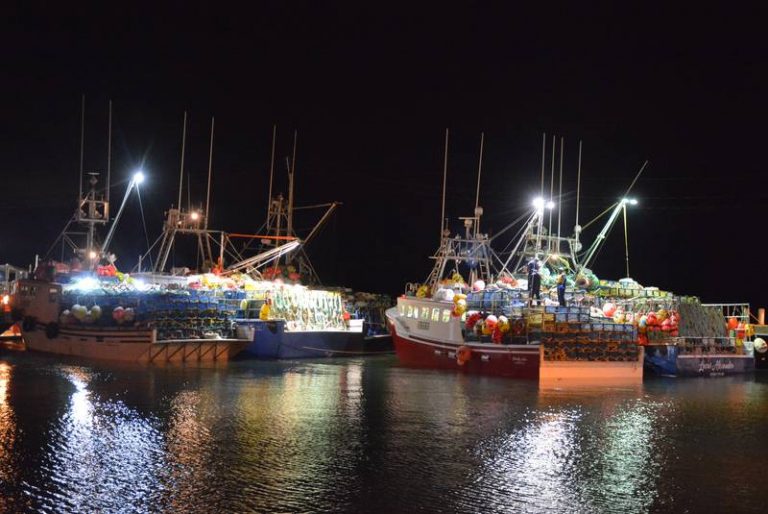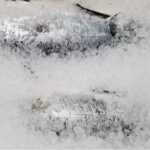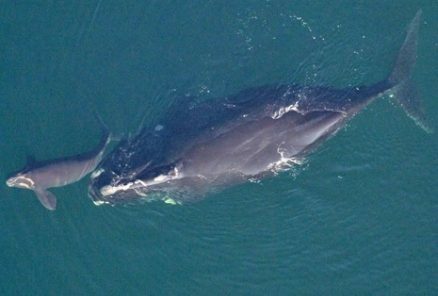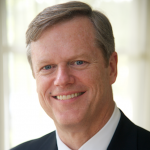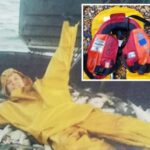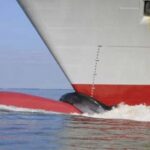Daily Archives: November 28, 2016
Dec. 1 – Scallop season opens with high hopes
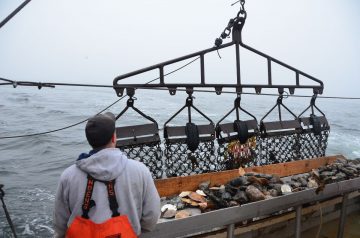 After an eight-month hiatus when, like summer tourists, the only scallops in local stores are “from away,” the Maine scallop fishing season is finally opening, at least for a handful of harvesters. All along the coastline, licensed scallop divers are allowed to start fishing for the succulent bivalves today, Thursday, Dec. 1. Dragger fishermen will have to wait to wet their gear until next Monday, Dec. 5. The season opens on an optimistic note. Over the past five years, scallop landings have increased steadily, from just over 175,000 pounds of scallop meats (about 1.5 million pounds in the shell) during 2011 to almost 453,000 pounds in 2015. According to Trisha Cheney, a resource management coordinator at the Department of Marine Resources, 635 harvesters—77 divers and 558 draggers–had licenses to fish for scallops last year and are eligible to get licenses in 2016. Of that group, Cheney said, 445 licensed harvesters actually participated in the fishery. There were, she said, 52 active divers, 373 active draggers and 20 “unknown” harvesters who DMR can’t identify as working in either category. In 2009, only 168 harvesters fished for scallops in Maine. Read the story here 21:32
After an eight-month hiatus when, like summer tourists, the only scallops in local stores are “from away,” the Maine scallop fishing season is finally opening, at least for a handful of harvesters. All along the coastline, licensed scallop divers are allowed to start fishing for the succulent bivalves today, Thursday, Dec. 1. Dragger fishermen will have to wait to wet their gear until next Monday, Dec. 5. The season opens on an optimistic note. Over the past five years, scallop landings have increased steadily, from just over 175,000 pounds of scallop meats (about 1.5 million pounds in the shell) during 2011 to almost 453,000 pounds in 2015. According to Trisha Cheney, a resource management coordinator at the Department of Marine Resources, 635 harvesters—77 divers and 558 draggers–had licenses to fish for scallops last year and are eligible to get licenses in 2016. Of that group, Cheney said, 445 licensed harvesters actually participated in the fishery. There were, she said, 52 active divers, 373 active draggers and 20 “unknown” harvesters who DMR can’t identify as working in either category. In 2009, only 168 harvesters fished for scallops in Maine. Read the story here 21:32
North Carolina Commercial Fisherman Pleads Guilty to Illegally Harvesting and Selling Atlantic Striped Bass
The  announced that today in federal court, James Ralph Craddock, 71, of Manns Harbor, pleaded guilty to federal charges regarding the illegal harvest and sale of Atlantic Striped Bass from federal waters off the coast of North Carolina in 2010. According to information in the public record, in February 2010, a Special Agent with the National Oceanic and Atmospheric Administration (NOAA) received information that commercial trawlers were illegally fishing for Atlantic Striped Bass in federal waters off the coast of North Carolina. A single patrol vessel in the area intercepted one of 17 commercial trawlers in the EEZ, the fishing vessel Lady Samaira, boarded the vessel and found 173 Atlantic Striped Bass. The captain later admitted to taking the fish from the EEZ. Given the other commercial trawlers in the same area, NOAA conducted an analysis of electronic data and written reports from those vessels. Based on its review, NOAA determined that during the North Carolina 20-day ocean trawl season in January/February 2010, Craddock, then Captain of the 74-foot commercial fishing vessel Capt Ralph, harvested over 12,000 pounds of Atlantic Striped Bass. Read the rest here 19:50
announced that today in federal court, James Ralph Craddock, 71, of Manns Harbor, pleaded guilty to federal charges regarding the illegal harvest and sale of Atlantic Striped Bass from federal waters off the coast of North Carolina in 2010. According to information in the public record, in February 2010, a Special Agent with the National Oceanic and Atmospheric Administration (NOAA) received information that commercial trawlers were illegally fishing for Atlantic Striped Bass in federal waters off the coast of North Carolina. A single patrol vessel in the area intercepted one of 17 commercial trawlers in the EEZ, the fishing vessel Lady Samaira, boarded the vessel and found 173 Atlantic Striped Bass. The captain later admitted to taking the fish from the EEZ. Given the other commercial trawlers in the same area, NOAA conducted an analysis of electronic data and written reports from those vessels. Based on its review, NOAA determined that during the North Carolina 20-day ocean trawl season in January/February 2010, Craddock, then Captain of the 74-foot commercial fishing vessel Capt Ralph, harvested over 12,000 pounds of Atlantic Striped Bass. Read the rest here 19:50
The Bahamas: No Chinese Commercial Fishing Allowed
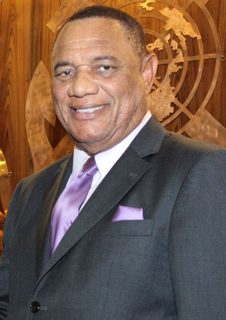 Speculation having been rife for several weeks about the remote possibility of large-scale fishing in Bahamian waters by Chinese fishing vessels. The Prime Minister of The Bahamas, the Rt. Hon. Perry Christie, has put the matter to rest in a statement released on November 22, 2016, unequivocally stating: “We are not going to compromise and no discussion will lead to a conclusion that this government would have contemplated or agreed for that to happen.” Christie emphatically stated in reports in the Nassau Guardian and Tribune daily newspapers that no mass commercial fishing will take place under foreign ownership. Christie said commercial fishing is reserved only for Bahamians, that there are no fisheries negotiations with the Chinese. The Prime Minister reiterated his government’s policy of conserving the Bahamas’ fisheries and natural resources. Read the rest here 18:47
Speculation having been rife for several weeks about the remote possibility of large-scale fishing in Bahamian waters by Chinese fishing vessels. The Prime Minister of The Bahamas, the Rt. Hon. Perry Christie, has put the matter to rest in a statement released on November 22, 2016, unequivocally stating: “We are not going to compromise and no discussion will lead to a conclusion that this government would have contemplated or agreed for that to happen.” Christie emphatically stated in reports in the Nassau Guardian and Tribune daily newspapers that no mass commercial fishing will take place under foreign ownership. Christie said commercial fishing is reserved only for Bahamians, that there are no fisheries negotiations with the Chinese. The Prime Minister reiterated his government’s policy of conserving the Bahamas’ fisheries and natural resources. Read the rest here 18:47
FFAW claims harvesters revoking signed support for FISH-NL
 The president of the Fish, Food and Allied Workers Union (FFAW) says some fish harvesters are having a change of heart about FISH-NL. In a news release Monday, Keith Sullivan said his union is being contacted by people who want to revoke their signatures on membership cards that supported Ryan Cleary’s breakaway group. “It’s become very clear that harvesters are not buying the hollow agenda of anger and division with no plan that FISH-NL is trying to sell,” said Sullivan. The release states the “surge” in requests to revoke signatures “comes at the same time as Cleary questioned whether there should be an inshore northern cod fishery at all this year.” Read the rest here 16:37
The president of the Fish, Food and Allied Workers Union (FFAW) says some fish harvesters are having a change of heart about FISH-NL. In a news release Monday, Keith Sullivan said his union is being contacted by people who want to revoke their signatures on membership cards that supported Ryan Cleary’s breakaway group. “It’s become very clear that harvesters are not buying the hollow agenda of anger and division with no plan that FISH-NL is trying to sell,” said Sullivan. The release states the “surge” in requests to revoke signatures “comes at the same time as Cleary questioned whether there should be an inshore northern cod fishery at all this year.” Read the rest here 16:37
2017 Bristol Bay sockeye forecast in line with recent average
 Bristol Bay can look forward to a regular season in 2017 after two years of hard work, if the forecast is to be believed. Alaska’s largest sockeye run has blown past projections the last two years, but next year the Alaska Department of Fish and Game predicts an average harvest. “A total of 41.47 million sockeye salmon (range 31.20–51.73 million) are expected to return to Bristol Bay in 2017,” according to an ADFG report released Nov. 15. “This is virtually identical to the most recent 10-year average of Bristol Bay total runs (41.39) and 27 percent greater than the long-term mean of 32.76 million.” For commercial fishermen, this means next year’s harvest will also be average, with a commercial harvest of 29 million. “A Bristol Bay harvest of this size is 2 percent lower than the most recent 10-year harvest which has ranged from 15.43 million to 37.53 million, and 34 percent greater than the long-term harvest average of 20.52 million fish (1963 to present),” the report states. Read the rest here 15:14
Bristol Bay can look forward to a regular season in 2017 after two years of hard work, if the forecast is to be believed. Alaska’s largest sockeye run has blown past projections the last two years, but next year the Alaska Department of Fish and Game predicts an average harvest. “A total of 41.47 million sockeye salmon (range 31.20–51.73 million) are expected to return to Bristol Bay in 2017,” according to an ADFG report released Nov. 15. “This is virtually identical to the most recent 10-year average of Bristol Bay total runs (41.39) and 27 percent greater than the long-term mean of 32.76 million.” For commercial fishermen, this means next year’s harvest will also be average, with a commercial harvest of 29 million. “A Bristol Bay harvest of this size is 2 percent lower than the most recent 10-year harvest which has ranged from 15.43 million to 37.53 million, and 34 percent greater than the long-term harvest average of 20.52 million fish (1963 to present),” the report states. Read the rest here 15:14
Local crab hauls set to hit ports on Thursday; buying price set at $3 per pound
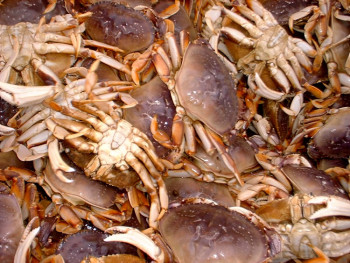 The following is a press release issued by the Humboldt Fishermen’s Marketing Association: fishermen in District 6 (North Jetty Humboldt Bay to Oregon Border) can begin setting crab pots today, but many local fishermen may stay tied up. Rough ocean conditions and a very large northwesterly swell forecast by the National Weather Service is expected to produce unsafe conditions on the ocean and Humboldt Bay Bar. Meanwhile, boats out of Trinidad and Crescent City will also begin setting pots. Dungeness crabs in District 6 have tested free of domoic acid (a naturally occurring compound) and are reported to be of exceptional quality with high meat recovery. District 6 is the only area north of Point Reyes, San Francisco open to crab fishing in California. Oregon could open as soon as December 15, and Washington State sometime later. Because of limited fishing area and high crab quality, the three local fishermen’s associations (Humboldt, Trinidad, and Crescent City) discussed the possibility of waiting to begin fishing in order to negotiate with crab buyers for a higher price. Unable to achieve consensus on the issue of price, the crab fleet will start fishing with an ex-vessel price of $3 per pound. The first local crabs of the season will be delivered to our ports on December 1st. Link 14:33
The following is a press release issued by the Humboldt Fishermen’s Marketing Association: fishermen in District 6 (North Jetty Humboldt Bay to Oregon Border) can begin setting crab pots today, but many local fishermen may stay tied up. Rough ocean conditions and a very large northwesterly swell forecast by the National Weather Service is expected to produce unsafe conditions on the ocean and Humboldt Bay Bar. Meanwhile, boats out of Trinidad and Crescent City will also begin setting pots. Dungeness crabs in District 6 have tested free of domoic acid (a naturally occurring compound) and are reported to be of exceptional quality with high meat recovery. District 6 is the only area north of Point Reyes, San Francisco open to crab fishing in California. Oregon could open as soon as December 15, and Washington State sometime later. Because of limited fishing area and high crab quality, the three local fishermen’s associations (Humboldt, Trinidad, and Crescent City) discussed the possibility of waiting to begin fishing in order to negotiate with crab buyers for a higher price. Unable to achieve consensus on the issue of price, the crab fleet will start fishing with an ex-vessel price of $3 per pound. The first local crabs of the season will be delivered to our ports on December 1st. Link 14:33

‘Dumping Day’ docked by blustery forecasts in effort to make lobster hunt safer
Safety is of the utmost importance to today’s lobster fishers. And safety holds special significance for old-timers to whom the precautionary measures are a mournful reminder of sailors who paid the ultimate price in pursuit of Canada’s most valuable sea-dwelling commodity. “We try to make Dumping Day safe as we can,” says longtime lobsterman Ashton Spinney. “Still, there’s danger … Unforeseen accidents happen. “Spinney is a member of the body that oversees Lobster Fishing Area 34 (LFA 34) in southwestern Nova Scotia — an approximately New Jersey-sized body of water that has the largest catches of Canada’s 41 lobster fishing districts. Canada’s billion-dollar lobster business remains the most lucrative fishery the country and a crucial economic engine on the East Coast, employing about 30,000 harvesters in the Atlantic provinces. Spinney, who is coming up on his 60th Dumping Day, says in his early years, fishers would set out to sea in up to 130 kilometre per hour winds, restricted only by time and nautical nerve. He says the rules have since changed to only allow boats to set sail if the weather permits safe travel. Contingencies like this have likely spared lives in recent years, Spinney says, but still today, every angler risks life and limb upon exiting the harbour. – Read the rest here 11:21
Fishermen’s federations adopt united stance on Brexit
The Scottish Fishermen’s Federation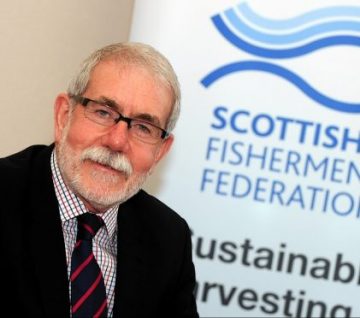 (SFF) and the National Federation of Fishermen’s Organisations (NFFO) agreed the key outcomes they want from negotiations to leave the EU at a recent meeting in Edinburgh. The organisations say fishermen across the UK have welcomed Brexit as an opportunity to secure significant economic benefit for coastal communities once the UK regains control of its 200 mile Exclusive Economic Zone (EEZ). At the meeting it was agreed they would seek fairer shares of catching opportunity for UK vessels and full control over access to the UK EEZ by fishing fleets. They also want to see the creation of a “fit-for-purpose” management and regulation system, including a grass roots revision of fisheries management based on “sustainable harvesting and sound science.” The federations are calling for the establishment of mutually beneficial trading relationships with the EU and other countries. They also agreed that there must be no roll-over of the current Common Fisheries Policy (CFP) and that negotiations regarding fisheries should not be entangled with non-fisheries issues. And they insist negotiations must benefit all sectors of the fishing industry, including inshore and offshore fleets, fish and shellfish. Read the rest here 09:52
(SFF) and the National Federation of Fishermen’s Organisations (NFFO) agreed the key outcomes they want from negotiations to leave the EU at a recent meeting in Edinburgh. The organisations say fishermen across the UK have welcomed Brexit as an opportunity to secure significant economic benefit for coastal communities once the UK regains control of its 200 mile Exclusive Economic Zone (EEZ). At the meeting it was agreed they would seek fairer shares of catching opportunity for UK vessels and full control over access to the UK EEZ by fishing fleets. They also want to see the creation of a “fit-for-purpose” management and regulation system, including a grass roots revision of fisheries management based on “sustainable harvesting and sound science.” The federations are calling for the establishment of mutually beneficial trading relationships with the EU and other countries. They also agreed that there must be no roll-over of the current Common Fisheries Policy (CFP) and that negotiations regarding fisheries should not be entangled with non-fisheries issues. And they insist negotiations must benefit all sectors of the fishing industry, including inshore and offshore fleets, fish and shellfish. Read the rest here 09:52
Will Trump Be Able To Undo Papahanaumokuakea, Northeast Canyons and Seamounts Marine National Monuments?
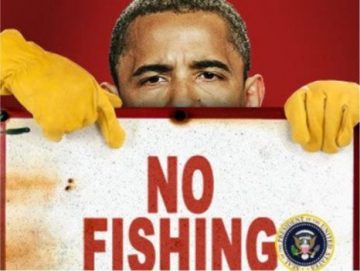 In the months leading up to the Nov. 8 election, President Barack Obama signed a series of proclamations to dramatically increase the amount of land and water that is federally protected from commercial fishing, mining, drilling and development. On Aug. 24, he established a nearly 90,000-acre national monument in the Katahdin Woods of Maine. Two days later, Obama expanded Papahanaumokuakea Marine National Monument around the Northwestern Hawaiian Islands by 283 million acres, making it the world’s largest protected area at the time. And on Sept. 15, he created the first national monument in the Atlantic Ocean, protecting more than 3 million acres of marine ecosystems, seamounts and underwater canyons southeast of Cape Cod, Massachusetts. It’s mostly speculation at this point as to what Trump will do but groups on both sides of the issue are keeping a watchful eye on things. Advocates for commercial fishing interests on the East Coast have started nudging policymakers to consider what changes the next administration could make. But West Coast and Hawaii industry groups are still gathering information and developing plans. Read the rest here 08:47
In the months leading up to the Nov. 8 election, President Barack Obama signed a series of proclamations to dramatically increase the amount of land and water that is federally protected from commercial fishing, mining, drilling and development. On Aug. 24, he established a nearly 90,000-acre national monument in the Katahdin Woods of Maine. Two days later, Obama expanded Papahanaumokuakea Marine National Monument around the Northwestern Hawaiian Islands by 283 million acres, making it the world’s largest protected area at the time. And on Sept. 15, he created the first national monument in the Atlantic Ocean, protecting more than 3 million acres of marine ecosystems, seamounts and underwater canyons southeast of Cape Cod, Massachusetts. It’s mostly speculation at this point as to what Trump will do but groups on both sides of the issue are keeping a watchful eye on things. Advocates for commercial fishing interests on the East Coast have started nudging policymakers to consider what changes the next administration could make. But West Coast and Hawaii industry groups are still gathering information and developing plans. Read the rest here 08:47
Wanted: Lobstermen willing to try out life vests
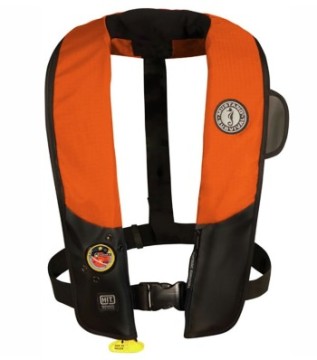 The Northeast Center for Occupational Health and Safety is asking New England lobstermen to help design a life jacket they would actually wear every day. It could be a matter of life or death. Researchers will visit Maine docks this winter to recruit fishermen to try out different kinds of personal flotation devices, or PFDs, for a month to determine which designs work best for daily use aboard a lobster boat. The lobstermen will be paid to test the life vest, and can keep it for their own use once they are done. “This isn’t about making lobstermen wear anything, telling them what to do or regulating anything,” said principal investigator Julie Sorensen of the Northeast Center. “It’s about making PFDs comfortable enough that fishermen want to wear them.” Statistics suggest it will be a hard sell, but well worth it. Researchers at the Northeast Center hope their PFD design study, which is being conducted with Fishing Partnership Support Services of Massachusetts, will help manufacturers tailor flotation devices to the lobster industry and convince fishermen a vest can save their lives without making them miserable or poor. In two years, they will return to the docks with the most popular design for nine-month trials. Read the article here 08:07
The Northeast Center for Occupational Health and Safety is asking New England lobstermen to help design a life jacket they would actually wear every day. It could be a matter of life or death. Researchers will visit Maine docks this winter to recruit fishermen to try out different kinds of personal flotation devices, or PFDs, for a month to determine which designs work best for daily use aboard a lobster boat. The lobstermen will be paid to test the life vest, and can keep it for their own use once they are done. “This isn’t about making lobstermen wear anything, telling them what to do or regulating anything,” said principal investigator Julie Sorensen of the Northeast Center. “It’s about making PFDs comfortable enough that fishermen want to wear them.” Statistics suggest it will be a hard sell, but well worth it. Researchers at the Northeast Center hope their PFD design study, which is being conducted with Fishing Partnership Support Services of Massachusetts, will help manufacturers tailor flotation devices to the lobster industry and convince fishermen a vest can save their lives without making them miserable or poor. In two years, they will return to the docks with the most popular design for nine-month trials. Read the article here 08:07

































